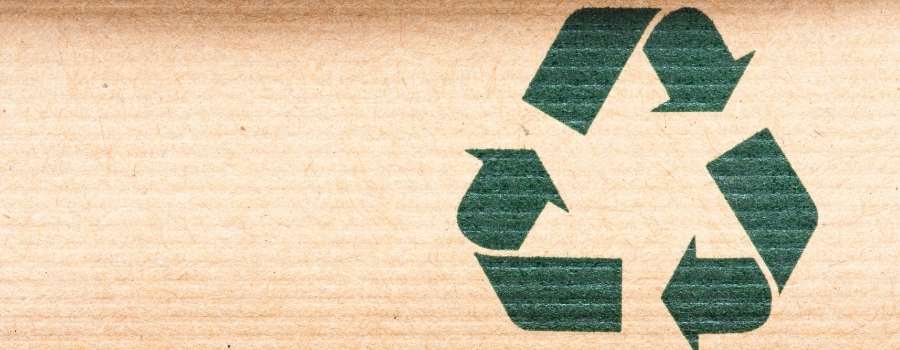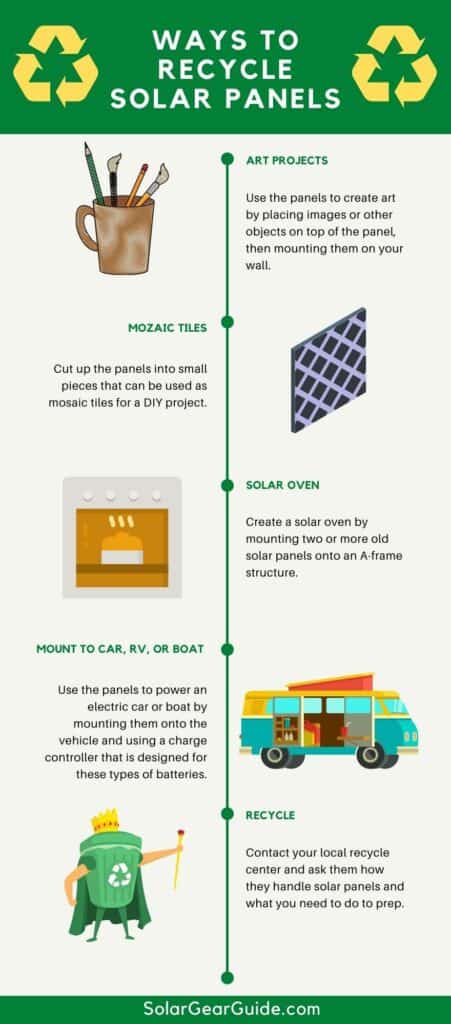
There is currently a recycling problem, at least when it comes to solar panels. The unfortunate aspect of technology is that it doesn’t last forever. Of course, nothing does. But, in the United States, only about 10% of useless solar panels are recycled and that adds up to a lot of waste.
There are only a few recycling centers scattered across the US where you could take a solar panel and have it recycled. For the most part, recycling a solar panel is problematic for most Americans. So while you can recycle it, the odds of finding a place are slim.
There are a few national and international recycling companies that have recycling centers in various states. Michigan, Minnesota, Ohio, South Carolina, Nevada, and potentially North Carolina. The problem is, there’s only one place to take them as of right now.
Solar Panel Recycling Problems
The average lifespan of a solar panel is about 25 years. Some of them can make it for 30. The solar panel industry is relatively new, stretching its legs for the first time and the country isn’t prepared for the eventual fallout.
Since the solar industry really became a driving force at the turn of the millennium. It’s nearly 2023 and the first 25 years is approaching rapidly. At some point, there’s going to be a rise in recyclable solar panels with nowhere to take them.
While the industry was rising rapidly in popularity, no one was taking the time to figure out…much less start setting up…recycling centers and a system for turning in old, useless solar panels for recycling.
Unrecycled Solar Panels
The reusable parts on solar panels are numerous. In fact, the overall expected value for these recyclable parts is around $15 billion. That’s a lot of money with an infrastructure that’s only in its developmental infancy and the bill is coming due really soon.
Then there is the problem with the components, namely the lead. Solar panels often contain lead and if used panels are thrown in a landfill, that lead will eventually leak into the ground. That’s not the only toxic material found in solar panels either:
- Cadmium
- Gallium Arsenide
- Hexavalent Chromium
- Copper
- Selenium
- Idium
These materials aren’t necessarily toxic when they are used throughout the lifespan of the solar panel. They may become so if they end up sitting in a landfill somewhere. Glass companies will often take in solar panels for recycling, but there’s a problem with that as well.
For one, these glass companies will generally take just the glass and the aluminum from the panels. For two, they often toss the rest in the garbage, where the solar panels will end up in a landfill…precisely where they don’t need to be.
How Are Solar Panels Recycled?
Typically, the glass, aluminum, and plastics in solar panels are the parts that get recycled. The rest is problematic but the industry is playing a bit of catch-up at this point. The framing on solar panels is aluminum and that entire part is the first to go.
After the aluminum is removed and sent away for processing, the glass comes next. The primary recycling part takes place through thermal processing, where the remaining panel parts are heated up to nearly 1,000°F.
This thermal process allows the various components to be separated. Once separated, the various components are combined, especially the silicon, into slabs and shipped out.
The unfortunate aspect of all this is that the recycling process described above is how European industries do it.
Cracking, Washing, Baking
Recycling solar panels involve a multi-step process to help better separate and sort the various materials used to make solar panels.
- Cracking
- Washing
- Baking
The process of recycling the panels themselves is called “cracking”. Old solar modules and other components are first smashed into pieces for easier removal from their frames, which can be reused as well.
The frames will then undergo a crushing process in order to get rid of any remaining wire structures that might make them difficult to recycle.
The next step, the “washing” process, separates them into three categories: ferrous materials (steel), non-ferrous metals, and plastics.
Finally, after “baking” in a furnace or oven for about one hour at high temperatures, they are reduced to raw material powders that can be used as feedstock for new products.
US Companies that Recycle Solar Panels
In the United States, there are a number of companies that recycle solar panels. The numbers are fewer in places like the United Kingdom. Then again, the UK isn’t nearly as large as the US. For older solar panels that use older technology, there are still a handful of companies willing to recycle them.
- 3R Recycling
- CEM
- Cleanlites Recycling
- Dynamic Lifecycle Innovations
- Echo Environmental
- Exotech
- FabTech
- First Solar
- Green Lights Recycling
- Interco—A Metaltronics Recycler
- Metal and Catalyst Resources
- Mitsubishi Electric
- Morgen Industries
- Recycle PV Solar
- Recycle 1234
Finding A Recycling Company For Solar Panels
In most cases, you will have to look locally and the odds aren’t in your favor. The EPA has a scattered, nearly incoherent list of places scattered throughout the USA where you can take solar panels for recycling purposes.
Your best bet is to simply Google it. As we’ve conveyed above, there isn’t much in the way of a coordinated or concerted effort to organize and put together nationwide knowledge and resource centers on recycling solar panels.
You’ll find plenty of companies but the odds of them being anywhere close to you are slim and none. There are plenty of articles out there that say the solar recycling business is about to explode and they’re probably right. Not because they are privy to some special knowledge but because there won’t be a choice.
Can You Donate Solar Panels?
Maybe you’ve upgraded and your old solar panels still have plenty of life left in them. It’s difficult to recycle them so what about donating them?
Habitat for Humanity and Twende Solar both accept solar panel donations. They need them pretty badly too. Both companies integrate solar panels into much of their power needs in their humanitarian activities around the world.
They’re especially advantageous in third-world countries where the term “power grid” is as alien as the bottom of the ocean. This is especially true with Twende Solar, as they try to bring electricity to millions who simply don’t have it.

Make sure that these organizations know the working condition…or lack thereof…any equipment that you want to drop off. While they may not be able to benefit from the solar capabilities of the solar panels, they can still be used to learn about the structure of a solar panel or how things connect together.
If you need to dispose of the panel but aren’t sure how to contact your local recycling center or waste disposal service. They can tell you if they accept solar panels and how to prep them if they do, they may even direct you to services that are better suited for solar panels.
Either way, here are some steps to consider when recycling solar panels:
- Contact your local utility company for information on what materials they accept in their recycling program
- Clean up the area around where the panel was mounted using a mixture of water and soap or soap and water.
- Remove any dirt or grime, then remove the panel from its frame (if it has one). This should be done with care to avoid scratching the glass.
- Locate a recycling company near you that accepts solar panels for free or doesn’t charge a materials fee…for example, many Walmart stores have recycled centers that recycle e-waste.
- Call them to find out what materials they accept and make sure you are separating the solar panel from its frame if it has one.
- Bring your old panels in for recycling–the process should take about an hour, depending on how many solar panels are being recycled at once. You can call them before coming to make sure they’re not busy.
- The company will then break up the panels, clean and sort them for reuse.
What Are Some Ways To Use Old Solar Panels?
If recycling your solar panels or donating them isn’t possible, then consider some ways to “upcycle” them.
What you can do with old solar panels really depends on if they are still in working condition. Here are a few ideas that you may want to consider:
- Use the panels to create art by placing images or other objects on top of the panel, then mounting them on your wall. This is an inexpensive way to add some color and design into any room without having to worry about decorating for each season.
- Cut up the panels into small pieces that can be used as mosaic tiles for a DIY project.
- Mount the panel on your house and use it to light up the exterior of your home in an artistic way (this could help if you live somewhere where streetlights are sparse).
- Create a solar oven by mounting two or more old solar panels onto an A-frame structure.
- Use the panels to power an electric car or boat by mounting them onto the vehicle and using a charge controller that is designed for these types of batteries.
